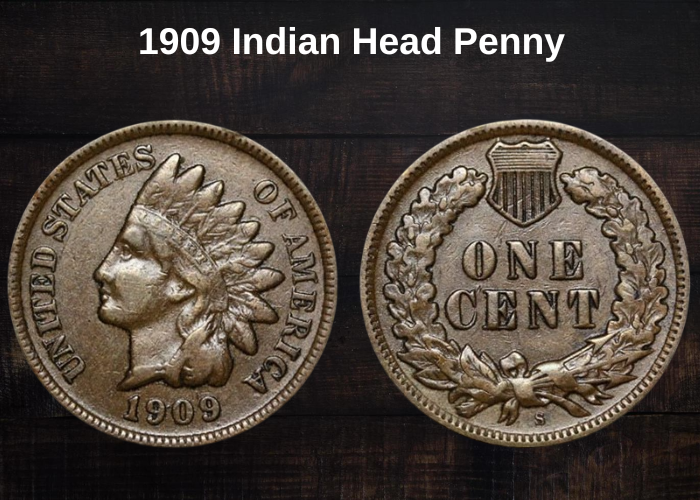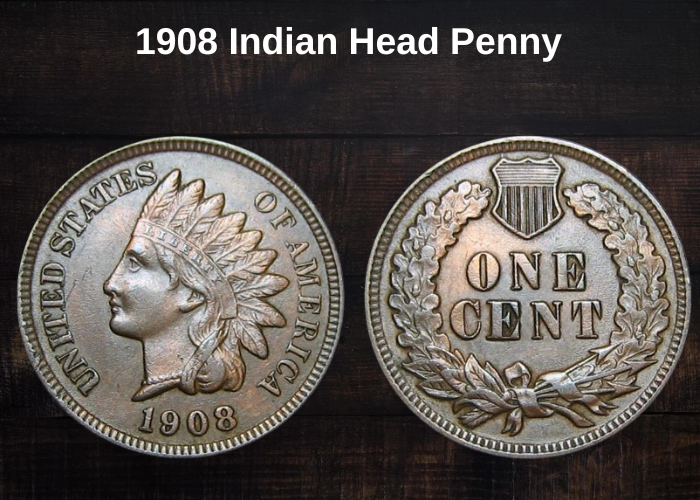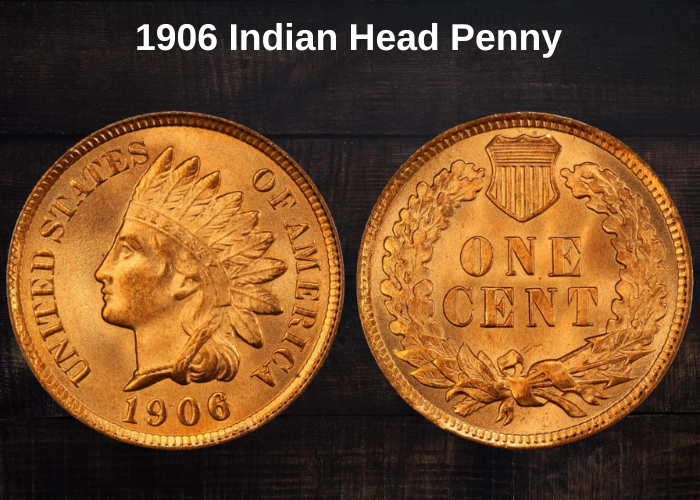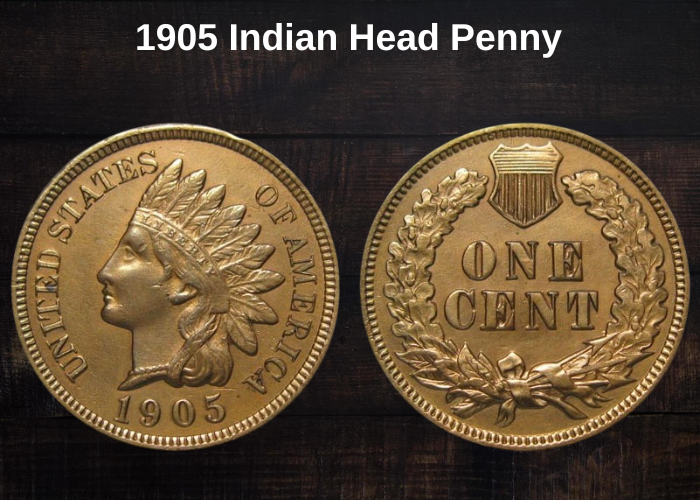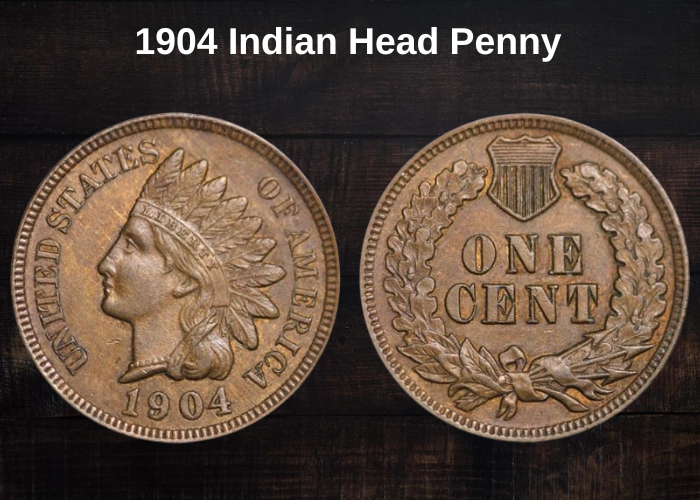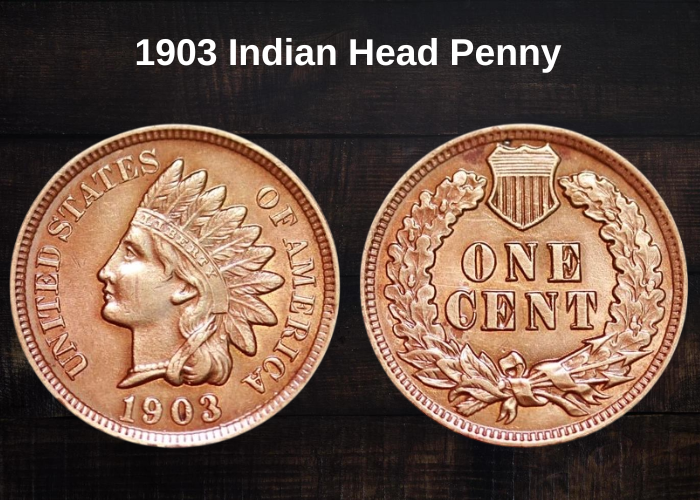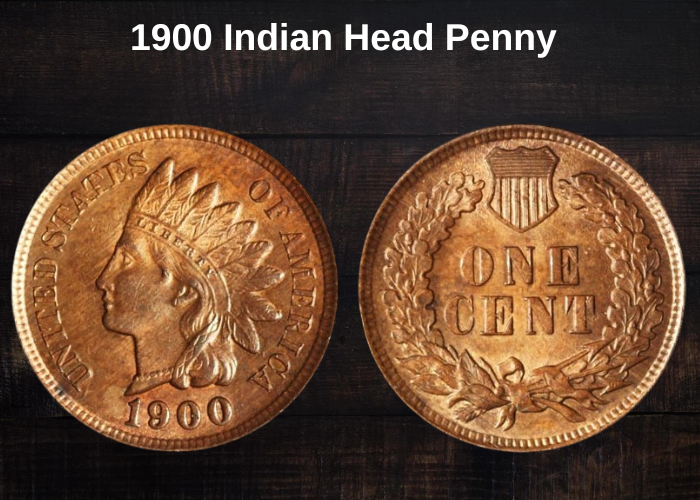The first one-cent coins honoring Native Americans were minted from 1859 to 1909. Most of these Small Cents remain widely available in today’s market, making them an affordable option for collectors.
The 1902 Indian Head penny holds a relatively low value despite being over 120 years old. This is due to its high mintage for the time. However, its historical significance as part of U.S. coinage still makes it a desirable collectible.
1902 Indian Head Penny Value Chart
| Condition | 1902 No Mint Mark Penny |
|---|---|
| Good | $2 |
| Very Good | $2 |
| Fine | $5 |
| Very Fine | $12 |
| Extra Fine | $20 |
| About Uncirculated (AU) | $32 |
| Mint State (MS) 60 | $50 |
| Mint State (MS) 63 | $80 |
| Proof (PR) 63 | $260 |
Values listed are for brown (BN) coins.
History of the 1902 Indian Head Penny
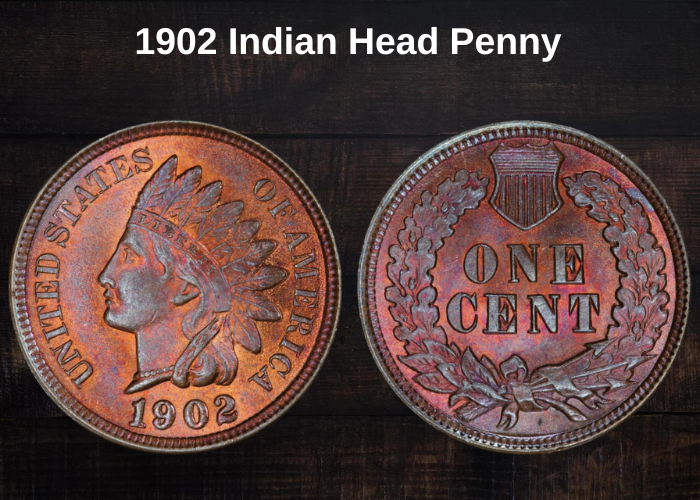
The Indian Head pennies, composed of 88% copper, were introduced in 1859 as a replacement for the short-lived Flying Eagle pennies. Since the Flying Eagle design was only minted for two years, many collectors today include both coin types in their collections.
However, even the new Indian Head pennies presented challenges due to rising material and production costs. As a result, the U.S. Mint modified the composition in 1864, creating a lighter version made of 95% copper. This design remained in circulation until its final minting year in 1909.
1902 Indian Head Penny Types
| Location | Year | Mintage |
|---|---|---|
| Philadelphia | 1902 No Mint Mark Penny | 87,374,704 |
| Philadelphia | 1902 Proof Penny | 2,018 |
| Total | / | 87,376,722 |
The coin was designed by James B. Longacre, who became the Chief Engraver at the U.S. Mint in 1844. Although he created several other coins, the Indian Head Penny remains his most famous and recognizable work.
Despite popular belief, Longacre did not base Lady Liberty’s portrait on his daughter. Instead, he drew inspiration from an ancient Greek statue. The Native American headdress featured on the coin was modeled after the war bonnets traditionally worn by the Lakota and Cheyenne tribes.
Features of the 1902 Indian Head Penny
The Indian Head pennies were introduced to replace the Flying Eagle pennies, which had proven difficult to strike. The Flying Eagle design was only minted for two years before being discontinued. The first Indian Head pennies, designed by James B. Longacre, entered circulation in 1858, marking the beginning of a long-lasting and iconic coin series.
The obverse of the 1902 Indian Head pennies
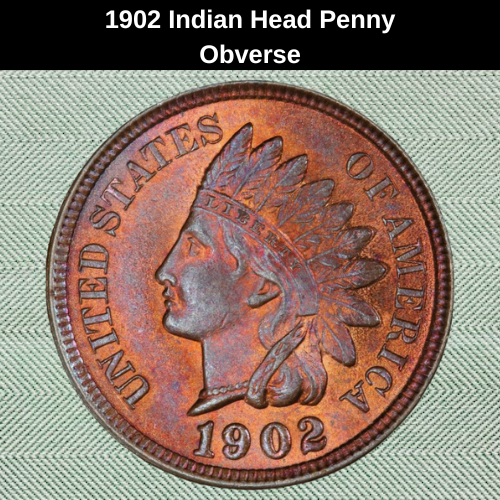
Like many early American coins, the 1902 Indian Head Penny features a simple yet distinctive design. At the center, Lady Liberty is depicted wearing a Native American headdress, with the word LIBERTY inscribed on the band. Surrounding the portrait along the coin’s rim are the words UNITED STATES OF AMERICA, with the mint year 1902 positioned below.
The reverse of the 1902 Indian Head pennies
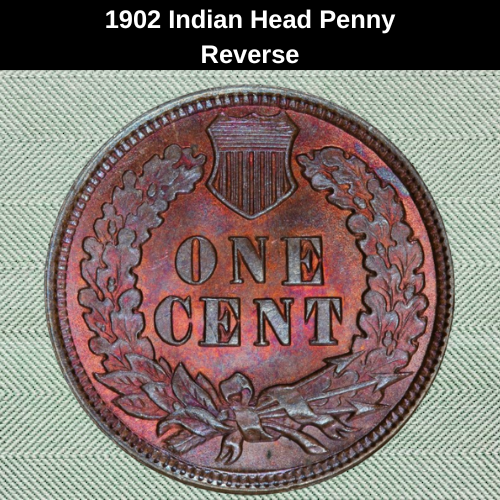
The 1902 Indian Head Penny features a redesigned reverse, which was first introduced in 1860. Instead of the original laurel wreath, these coins display an oak wreath with a shield at the top. At the center, the denomination ONE CENT is prominently featured.
1902 Indian Head Penny Specifications:
- Face Value: One cent ($0.01)
- Minting Technique: Milled
- Shape: Round
- Diameter: 19.05 mm (0.75 inches)
- Composition: 95% copper, with zinc or tin
- Type: Standard circulation coin
- Thickness: 1.47 mm (0.058 inches)
- Weight: 3.11 g (0.10970 ounces)
- Edge: Plain
Other features of the 1902 Indian Head pennies
The 1902 Indian Head pennies are simple yet historically significant copper one-cent coins. They have a diameter of 19.05 mm (0.75 inches) and feature a plain edge. Each coin weighs 3.11 g (0.10970 ounces) and has a thickness of 1.47 mm (0.058 inches).
1902 Indian Head Penny Grading
Collectors always evaluate a coin’s condition first, making grading a crucial step in determining its value. The best approach is to have a reputable grading company assess the 1902 Indian Head penny. Experts examine the coin for defects, errors, and overall preservation, which helps estimate its price range and can increase its auction value.
Grading Scale:
| Grade # | Condition |
|---|---|
| 1 | Basal State-1 |
| 2 | Fair |
| 3 | Very Fair |
| 4, 5, 6 | Good |
| 7, 8, 10 | Very Good |
| 12, 15 | Fine |
| 20, 30 | Very Fine |
| 40 | Extremely Fine |
| 50 | About Uncirculated |
| 60 | Mint State |
| 65 | Mint State |
| 70 | Mint State |
Be sure to consult our grading guides to determine your coin’s exact scale—an essential step in accurately assessing its true market value.
1902 Indian Head Penny Value Guides
The total mintage of Indian Head pennies in 1902 was 87,376,722. All these coins were produced at the Philadelphia Mint, which was responsible for minting regular circulation coins. Additionally, the mint struck just over 2,000 proof coins, specifically made for collectors.
1902 no mint mark Indian Head penny Value
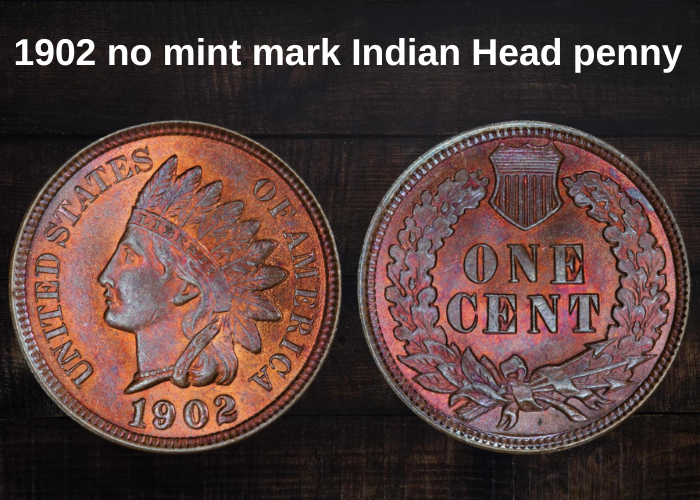
The Philadelphia Mint was the sole producer of 1902 Indian Head cents for regular circulation. Despite being over 120 years old, these coins remain fairly affordable due to the 87,374,704 pieces minted and the high number of surviving specimens.
1902 Indian Head Cent Value by Condition and Color
The value of these cents depends on their grade and color:
- Circulated brown (BN) coins range from $2 to $47, which is relatively low considering their age.
- Uncirculated specimens (MS 60 – MS 66) are priced between $50 and $600.
- Auction record: A MS 60 BN cent was sold for $4,370 in 2001.
Prices for Red-Brown (RB) Indian Head Cents
- MS 61: $65
- MS 62 – MS 66: $85 to $600
- Most expensive MS 64 RB: Sold for $1,100 in 2022.
Prices for Red (RD) Indian Head Cents
These are the most valuable due to their well-preserved color:
- MS 61: $90
- MS 62: $115
- MS 63: $185
- MS 64: $325
- MS 65: $700
- MS 66: $2,150
- MS 67: $16,500
The Most Expensive 1902 Indian Head Cent
MS 68 RD cents are estimated at $125,000, but in a 2022 auction, one was sold for $144,000, setting a new record.
1902 proof Indian Head penny value

In 1902, the Philadelphia Mint struck 2,018 proof Indian Head pennies specifically for collectors. These carefully crafted coins in brown (BN) condition start at $125, with values ranging from $150 to $1,350 for grades PR 61 to PR 66.
For top-tier specimens, collectors can expect to pay around $2,650 for a PR 67 BN. However, auction records surpass these estimates, with a PR 67 BN selling for $3,525 in 2015.
1902 Proof Indian Head Penny Values by Color
Red-Brown (RB) Proofs
Red-brown proof pennies are typically worth more:
- PR 66: $1,400
- PR 67: $3,850
- Auction Record: A PR 67 RB sold for $3,055 in 2018.
Red (RD) Proofs
Fully red proof pennies are the most valuable:
- PR 60: $175
- PR 63: $350
- PR 64: $750
- PR 65: $1,200
- PR 66: $1,600
- PR 67: $10,000
- PR 68 (estimated value): $36,000
- Auction Record: A PR 68 RD sold for $39,100 in 2008.
Special Cameo (CAM) Proofs
Some 1902 Indian Head proof pennies feature a cameo contrast, making them even more desirable. These coins command higher prices than standard proofs.
- PR 67 CAM Auction Record: $31,200 in 2019.
Rare 1902 Indian Head Penny Errors List
Like many vintage coins, the 1902 Indian Head penny series features several valuable errors. Due to the high mintage, the dies wore out quickly, leading to an increased number of imperfect coins entering circulation.
Die gouge
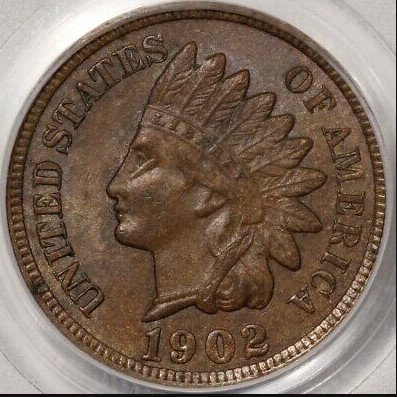
These error coins result from strikes on a faulty die, which may be scratched or incomplete, affecting the penny’s surface. The most collectible 1902 Indian Head pennies feature an error on Lady Liberty’s bottom eyelid. While some of these coins are valued at just $10, auction records usually range between $400 and $600.
Off-center
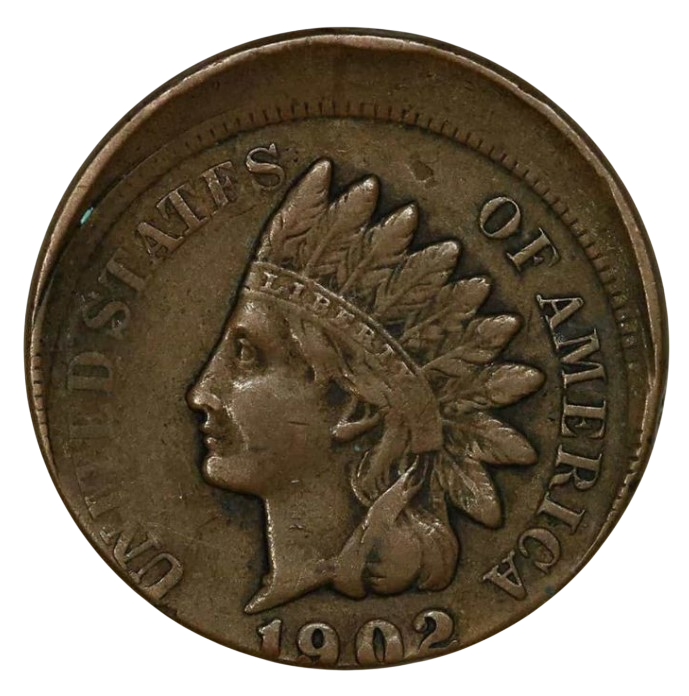
The 1902 pennies with an off-center error occurred when the planchet was improperly positioned during the minting process. These coins typically have an average price range of $160 to $800, with the final value depending on both the condition of the coin and the error percentage.
Displaced minting
Error coins like the 1902 off-center pennies are highly valuable to collectors due to their unusual displaced design, which results from an incorrect minting process. The degree of deviation can range from a minor shift to more significant errors, where the design is displaced by more than 50%. The greater the error, the higher the coin’s value.
Double strike

The 1902 Indian Head pennies that suffered from this issue were caused by incomplete ejection from the dies after the first strike. The coin got stuck for a while and was struck again, resulting in a second partial imprint overlapping the original design. These double-struck coins are highly sought after by collectors, and you can expect to pay at least $650 for one.
Broad strike
Broad strike pennies were created when the coin was struck while placed in an insecure collar, causing the coin to be broader and thinner than regular pieces. In some cases, these coins also have an off-center design. Because of their unique and distorted shape, broad strike pennies are valuable to collectors, with some fetching up to $350 on the market.
FAQ about the 1902 Indian Head Penny
What makes a 1902 Indian Head penny rare?
Even though 1902 pennies are over 120 years old, they are still fairly common in different conditions. However, only the best-graded pieces are considered rare and can fetch high prices, reaching thousands of dollars at auction.
Which 1902 Indian Head penny is worth a lot of money?
The 1902 Indian Head penny has seen some impressive auction records. Some of the top auction results include:
- 1902 MS 68 Indian Head red penny: $144,000 at Stack’s Bowers on June 17, 2022
- 1902 PR 68 Indian Head red penny: $39,100 at Bowers & Merena on April 1, 2008
- 1902 PR 67 Indian Head CAM penny: $31,200 at Stack’s Bowers on August 20, 2019
- 1902 MS 60 Indian Head brown penny: $4,370 at Goldberg Auctioneers on February 16, 2001
- 1902 PR 67 Indian Head brown penny: $3,525 at Legend Rare Coin Auctions on December 17, 2015
- 1902 PR 67 Indian Head red-brown penny: $3,055 at Legend Rare Coin Auctions on September 27, 2018
- 1902 MS 64 Indian Head red-brown penny: $1,100 at David Lawrence RC on November 27, 2022
How much is the Philadelphia 1902 Indian Head penny worth?
The value of the 1902 Philadelphia Indian Head penny can vary widely depending on its condition and coloring. Here’s an overview of the price range:
- Brown circulated pieces: $1.10 to $28.75
- Mint state coins: $32 to $1,688
- Red-brown coins: $50 to $2,200
- Red Indian Head pennies: $90 to $13,000
- Top-tier MS 68-rated red pennies can reach up to $120,000 at auctions.
What is the costliest Indian Head penny?
Some of the most valuable Indian Head pennies include:
- 1864 PR 65 L on ribbon penny: $161,000 (2011)
- 1877 MS 66 penny: $149,500 (2007)
- 1902 MS 68 red penny: $144,000 (2022)
- 1872 MS 66 penny: $126,500 (2007)
- 1899 MS 68 red penny: $108,000 (2019)
- 1897 PR 67+ DCAM penny: $108,000 (2021)

